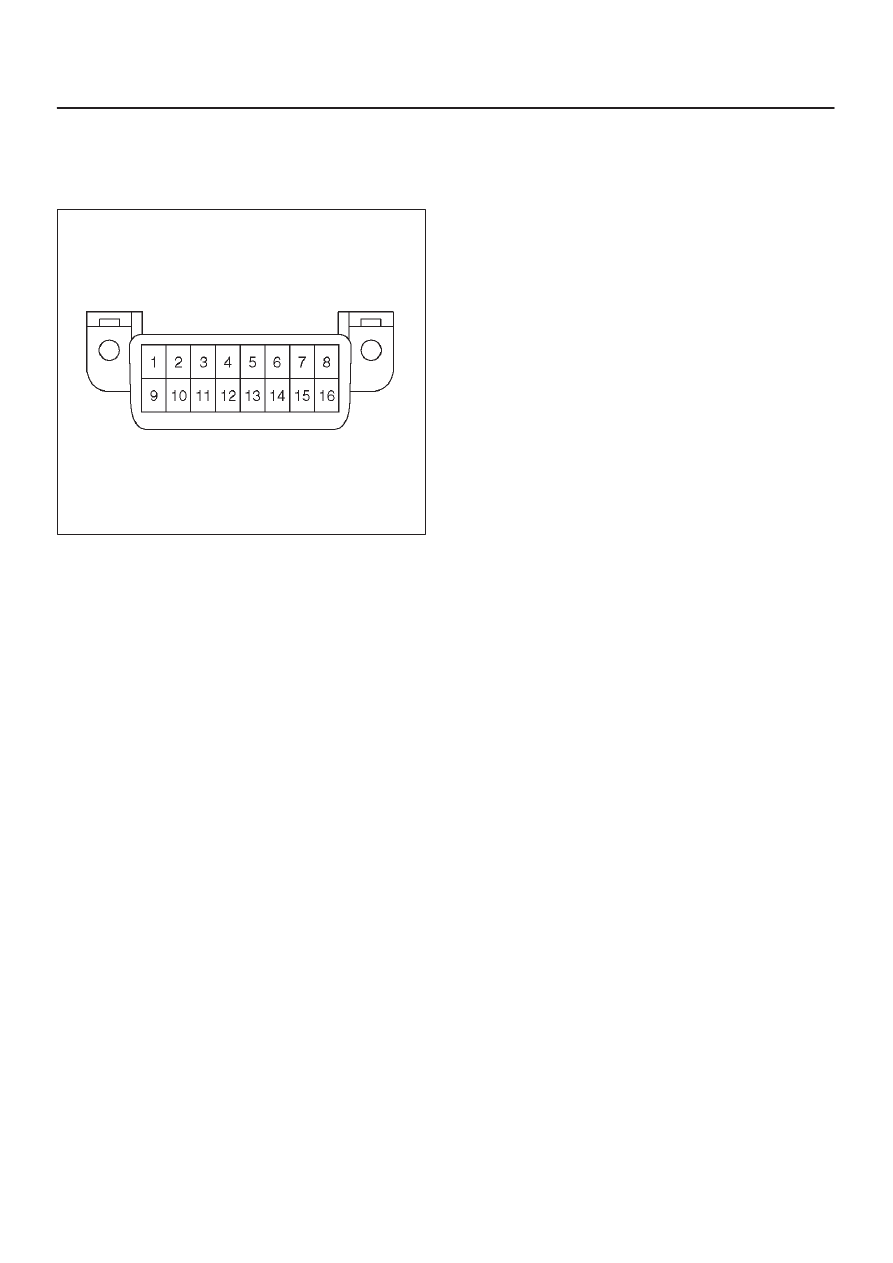Content .. 1395 1396 1397 1398 ..
Isuzu Amigo / Axiom / Trooper / Rodeo / VehiCross. Manual - part 1397

6E2–39
RODEO 6VD1 3.2L ENGINE DRIVEABILITY AND EMISSIONS
D
Identifying stored Diagnostic Trouble Codes (DTCs).
D
Clearing DTCs.
D
Performing output control tests.
D
Reading serial data.
TS24064
Decimal/Binary/Hexadecimal Conversions
Beginning in 1996, Federal Regulations require that all
auto manufacturers selling vehicles in the United States
provide Scan Tool manufacturers with software
information to display vehicle operating parameters. All
Scan Tool manufacturers will display a variety of vehicle
information which will aid in repairing the vehicle. Some
Scan Tools will display encoded messages which will aid
in determining the nature of the concern. The method of
encoding involves the use of a two additional numbering
systems: Binary and Hexadecimal.
The binary number system has a base of two numbers.
Each digit is either a 0 or a 1. A binary number is an eight
digit number and is read from right to left. Each digit has a
position number with the farthest right being the 0 position
and the farthest left being the 7 position. The 0 position,
when displayed by a 1, indicates 1 in decimal. Each
position to the left is double the previous position and
added to any other position values marked as a 1.
A hexadecimal system is composed of 16 different alpha
numeric characters. The alpha numeric characters used
are numbers 0 through 9 and letters A through F. The
hexadecimal system is the most natural and common
approach for Scan Tool manufacturers to display data
represented by binary numbers and digital code.
Verifying Vehicle Repair
Verification of vehicle repair will be more comprehensive
for vehicles with OBD II system diagnostic. Following a
repair, the technician should perform the following steps:
1. Review and record the Fail Records and/or Freeze
Frame data for the DTC which has been diagnosed
(Freeze Frame data will only be stored for an A or B
type diagnostic and only if the MIL has been
requested).
2. Clear DTC(s).
3. Operate the vehicle within conditions noted in the Fail
Records and/or Freeze Frame data.
4. Monitor the DTC status information for the DTC which
has been diagnosed until the diagnostic test
associated with that DTC runs.
Following these steps are very important in verifying
repairs on OBD ll systems. Failure to follow these steps
could result in unnecessary repairs.
Reading Diagnostic Trouble Codes Using
The Tech 2 Scan Tool
The procedure for reading diagnostic trouble code(s) is to
use a diagnostic Scan Tool. When reading DTC(s), follow
instructions supplied by tool manufacturer.
Clearing Diagnostic Trouble Codes
IMPORTANT:
Do not clear DTCs unless directed to do
so by the service information provided for each diagnostic
procedure. When DTCs are cleared, the Freeze Frame
and Failure Record data which may help diagnose an
intermittent fault will also be erased from memory.
If the fault that caused the DTC to be stored into memory
has been corrected, the Diagnostic Executive will begin to
count the “warm-up” cycles with no further faults
detected, the DTC will automatically be cleared from the
PCM memory.
To clear Diagnostic Trouble Codes (DTCs), use the
diagnostic Scan Tool “clear DTCs” or “clear information”
function. When clearing DTCs follow instructions
supplied by the tool manufacturer.
When a Scan Tool is not available, DTCs can also be
cleared by disconnecting
one of the following sources for
at least thirty (30) seconds.
NOTE: To prevent system damage, the ignition key must
be “OFF” when disconnecting or reconnecting battery
power.
D
The power source to the control module. Examples:
fuse, pigtail at battery PCM connectors, etc.
D
The negative battery cable. (Disconnecting the
negative battery cable will result in the loss of other
on-board memory data, such as preset radio tuning).